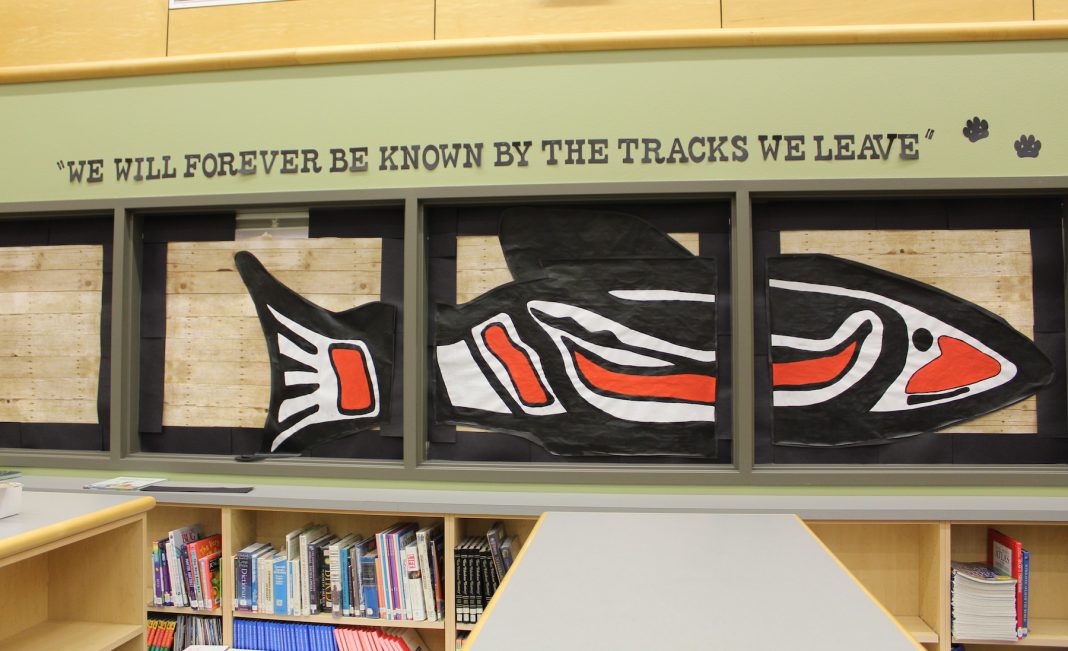As part of their 2021-22 “Including Everyone” theme, North Thurston Public Schools is committed to providing all students with access to high quality, inclusive learning experiences that celebrate diversity and multicultural backgrounds. This includes the district’s American Indian and Alaska Native students.
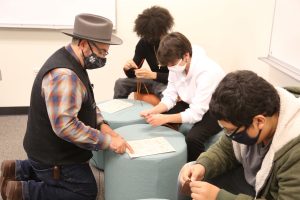
November is Native American Indian Heritage Month, as proclaimed by a joint congressional resolution signed in 1990, by then President George H.W. Bush. The purpose is to recognize the significant cultural and historical contributions that Native American and Indigenous peoples have made to our country. NTPS honors this sentiment throughout the year.
Students, teachers, and staff are supported by Jerad Koepp, the NTPS Native Student Program specialist. He is of the Wukchumni, a small tribe from central California. Jerad was recently honored as the 2022 Washington State Teacher of the Year. “I provide cultural and academic support for about 230 students,” says Jerad. This includes Native American students from over 50 tribes, nations, bands, and villages in 22 of the district’s 24 schools.
Jerad teaches across all grades and co-teaches. He also provides professional development across the district. “I make myself available as a resource. A teacher may reach out. I can do a class visit on any number of topics for any grade level,” he explains.
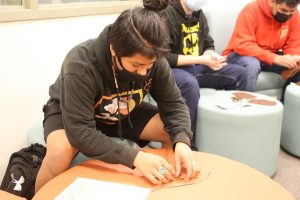
“What and how we teach needs to reflect our students,” says Jerad, who worked with River Ridge High School teacher Alison McCartan to develop an 11th grade U.S. History class curriculum from a Native American perspective. The material is thoughtfully considered but equally important is how the class is taught.
“What and how we measure success should be relevant to our students and community,” says Jerad. People from the community are invited to share their knowledge on many topics such as plants and medicine. Students can expand what and who teachers can be, which is one way to demonstrate inclusion. “As schools become more inclusive and supportive. they become safer for students to present their culture,” he adds.
River Ridge High School and Evergreen Forest have portables with space for students to meet. They also might convene in an unused classroom. The purpose, in part, is to expand kinship and community within the Native American students. “My classroom is indoors, outdoors, in a commons, or cafeteria, sometimes a library,” says Jerad. “My ‘classroom’ is wherever learning is happening.” Students have opportunities to do Native crafts such as tying drums or beading and investigate various academic pursuits.
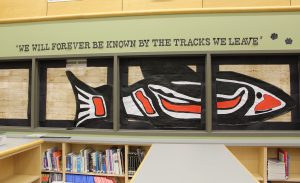
Healing of relationships between Indigenous people and public education is also a significant area of learning and growing. Jerad has been integral to this process at NTPS. The North Thurston Public School Board and the Nisqually Indian Tribal Leaders meet twice a year to better understand how both organizations can collaboratively support their students and communities. This partnership helps leaders from both entities create unity and understanding of the Native American Culture. “The greatest way to understand one’s culture is to learn directly from that culture,” says Dave Newkirk, NTPS board member.
People are realizing that there is discrimination through omission. Two-thirds of people think Native Americans face little or no discrimination, Jared shares. This lack of visibility means many concerns are never brought to the table in meetings and at decision-making events. Raising awareness is critical to making progress.
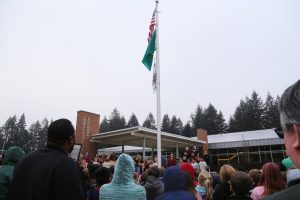
The Nisqually Indian Tribe Flag is flown at each of the 22 schools and 3 educational buildings within the district. Flying this flag serves as a daily recognition of the partnership with the Nisqually Tribe and reminder of the tribe’s traditional lands, thriving government and culture.
Additionally, the NTPS Board reads a land acknowledgement at the beginning of every public meeting and school assemblies to show tribute and respect to Native American families. The land acknowledgment statement is also read at school assemblies, district-wide public events, and evening events at the schools and buildings. “The acknowledgment will also support openness and awareness of all indigenous peoples and our duty as public educators to equitably support and educate Native children,” affirms Dave. “We will continue to strive and influence all to build a better tomorrow for all of our children.”
For those who have not heard or read the land acknowledgement, it is as follows:
We acknowledge that North Thurston Public Schools resides on the traditional lands of the Nisqually people. The Nisqually have lived on and cared for this land and these waterways since time immemorial. We make this acknowledgement to open a space of recognition, inclusion, and respect for our sovereign tribal partners and all indigenous students, families, and staff in our community.
“The more visibility we can raise, the more we humanize each other and have a much more supportive community,” says Jerad. “I am so proud of my district.”
Learn more about the district’s Native American partnership and activities at the NTPS website.
Sponsored







































